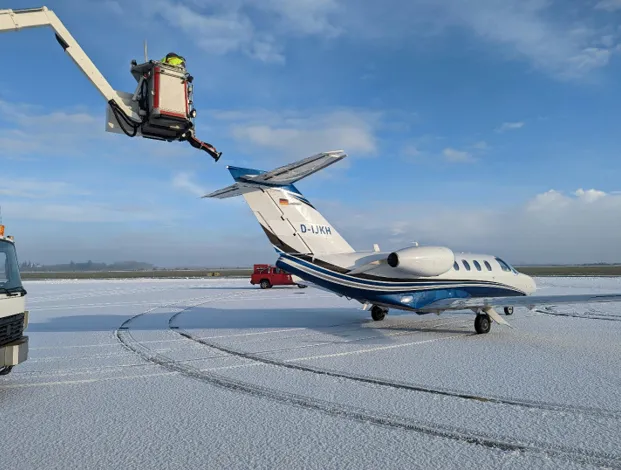Aircraft mounts are critical components that ensure stability, vibration isolation, and secure attachment of various parts to the aircraft structure. Each mount, whether for the engine, landing gear, or avionics systems, is critical to ensuring the aircraft’s smooth operation and longevity. These mounts are made to withstand high speeds, turbulence, and strong vibrations, among other severe environments. Knowing the several kinds of aircraft mounts helps you to choose the best one for your requirements, thereby improving performance and safety.
Contents
1. Engine Mounts: Essential for Stability and Performance
Designed to connect the engine to the airframe securely, engine mounts are among the most important parts of an aircraft. These mounts are designed to capture the strong vibrations produced by the engine during running and prevent its transmission to the rest of the aircraft. Usually composed of premium materials like rubber or sophisticated composites, engine mounts provide flexibility so the engine may move slightly without sacrificing structural integrity. This movement is crucial since it enables the contraction and thermal expansion experienced during operation. Manufacturers such as Barry Mounts are known for their precision-engineered designs, which ensure maximum stability and vibration control for aircraft engines. Preventing mechanical problems and guaranteeing safe flying operations depends on proper maintenance of engine mounts.
2. Landing Gear Mounts: Supporting the Weight of the Aircraft
The safe and reliable operation of an aircraft’s landing gear system depends on landing gear mounts. These mounts must be able to withstand the great forces experienced during takeoff, landing, and taxiing since they connect the landing gear system to the aircraft’s fuselage or wing. Their design helps to disperse the impact forces over the aircraft’s frame equally, therefore reducing stress on specific parts. Usually composed of high-strength metals, landing gear mounts are strengthened with other components to increase longevity. These mounts have to withstand shocks and vibrations both during taxiing and landing. The reliable performance of these mounts depends on regular inspections and maintenance since any failure could endanger aircraft safety during landing operations.
3. Avionics Mounts: Ensuring Secure Electronics Integration
Avionics mounts are used to protect an aircraft’s flight control, navigation, and communication systems, among other electronic systems. These mounts guarantee that avionics equipment remains securely in position even in extremely challenging environments, including turbulence and rapid altitude changes. In order to keep delicate electronics from moving while in flight, which could cause damage or malfunction, avionics mounts need to be both incredibly strong and lightweight. Usually composed of non-corrosive materials, the mounting systems guarantee their resistance against external elements such as moisture and extreme temperatures. Furthermore, avionics mounts must be vibration-dampening in order to protect sensitive electronics from constant vibration and shock.
4. Wing Mounts: Providing Support and Flexibility
Maintaining the integrity and aerodynamic stability of the airplane depends on wing mounts, which connect the wings to the fuselage. Typically employed to absorb and disperse the forces applied during flight—including lift and drag—these installations can severely strain the aircraft structure. Wing mounts are manufactured from materials competent for managing high stress, including titanium alloys or carbon fiber composites since they experience both static and dynamic loads. Furthermore, wing mounts are designed to give a specific degree of flexibility so that the wings can move slightly under various flight environments. This adaptability guarantees optimal flying conditions and helps to control the aerodynamic forces. Maintaining aircraft stability and safety during flight depends on wing mounts operating as they should be.
5. Tail Mounts: Vital for Aerodynamic Control
Tail mounts, sometimes referred to as empennage mounts, secure the aircraft’s tail portion, including its horizontal and vertical stabilizers. Since they enable the aerodynamic balance of the aircraft during flight, these mounts are necessary for its control and stability. Tail mounts have to be made to resist the vibrations produced by the rest of the aircraft, as well as the aerodynamic forces operating on the tail. Tail mounts’ design and material choice are crucial to guarantee they won’t fail under the strain of rapid motions or stormy situations. Usually composed of high-strength metals or composites, these mounts are designed to allow slight movement, thereby maintaining the stability but flexibility of the tail section. Like other types of mounts, frequent inspections and maintenance are required to avoid structural failures endangering flight safety.
Conclusion
Basic elements like airplane mounts guarantee the integrity, performance, and safety of several systems inside an aircraft. Every type of mount—engine, avionics, wings, tail—serves a different purpose in making sure the aircraft runs consistently under the demanding circumstances of flight. These mounts are designed to provide ideal support and durability from vibration isolation to shock absorption. Using the right mounting solutions aviators can improve the lifetime and safety of their aircraft, ultimately contributing to smoother and safer flights.









